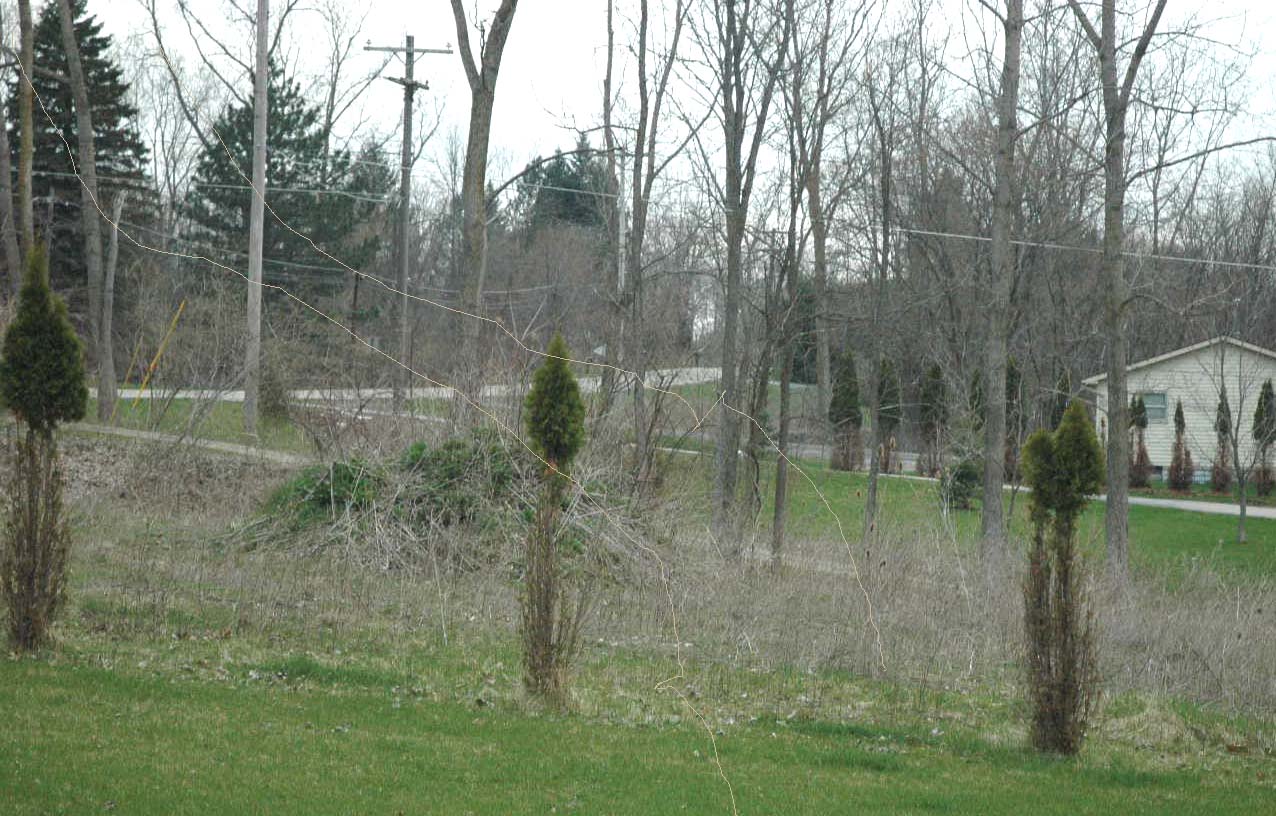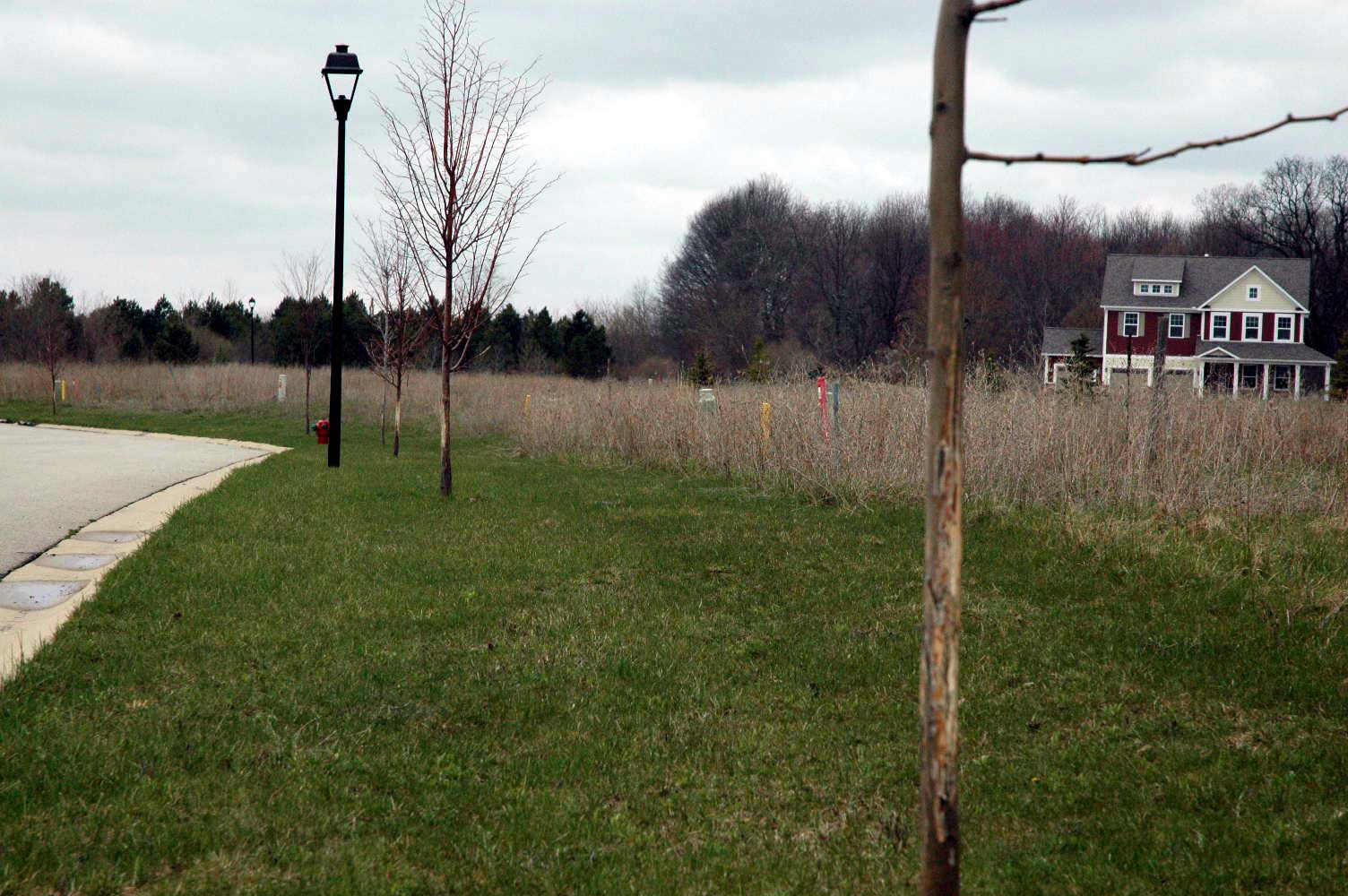As I noted last week, this has been a long winter in Michigan – OK, Jeff, no chortling from the frozen tundra of Minnesota… Most gardeners in this area have only been able to do their spring yard and garden clean-ups in fits and starts as the weather allows. We’re finally warming up a bit this week but now strong storms are in the forecast. One of the things gardeners will want to do is to size up any winter damage that has occurred since they put things to bed last fall. Although our winter was long, it was otherwise unremarkable with few temperature extremes – low or high – that would likely cause problems. In fact, aside from some heavy snow in February, the winter of 2010-11 was probably the closest thing we’ve had to a ‘normal’ winter in the 11 years I’ve lived in Michigan. Nevertheless, we will still be taking numerous extension calls on what we would consider ‘typical’ winter damage to trees and shrubs.

In this neighborhood not too far from my house, deer have declared open season on arborvitae.
One of the biggest issues we face is wildlife damage. The two biggest sources of problems are small mammals and deer. Small mammals such as mice, rabbits, squirrels and voles cause damage mainly by gnawing on trunks and branches. Despite their small size, these animals can kill trees by removing bark and underlying tissue around the circumference of a tree trunk, a process referred to as ‘girdling’. If a large portion of trunk circumference has been girdled, trees are unable to move energy reserves between roots and shoots, and will eventually die. Deer can cause extensive damage to trees and shrubs due to feeding and also through rubbing their antlers. Deer feeding is often indicated by a ‘browse line’ based on how high deer can reach. Rub damage from deer antlers can cause major deformation to trunks and can even kill trees by girdling. I was in a new subdivision in the East Lansing area this weekend and well over half of the trees on the tree lawns will need to be replaced due to extensive deer rub damage.

At least half of the trees in this entire subdivision will need to be replaced due to deer-rub damage.
Dealing with wildlife damage is a complex issue and varies with local conditions and wildlife pressure. Fortunately, wildlife experts from several universities (Cornell, Clemson, Nebraska, Utah State) have organized the Internet Center for Wildlife Damage Management. http://icwdm.org/ This site is one of the best resources I have run across for assessing and dealing with wildlife damage issues. If you’re in a position where you have to deal with wildlife damage or advise clients about damage, this is a useful site to add to your bookmarks.

In central IL we had a lot of damage from rabbits, only higher up than usual. This winter saw a much longer snow cover and it was topped with ice so the rabbits just hopped around on top, helping themselves.
As MGs, we haven’t had any deer damage questions yet. I was shocked this winter when one of my best friends and an avid gardener confessed she was feeding the deer. I cautioned her
not to let her neighbors know.
I thought I would be smart this year and didn’t cage/protect my shrubs as usual. Bad move on my part. Serious vole damage as well as I lost my best cat huntress to cancer. Got a different cat that might be able to take over for hunting voles. Haven’t checked my clients properties yet due to weather but there are serious numbers of arbor vitae’s with snow damage that now look like leaning towers!